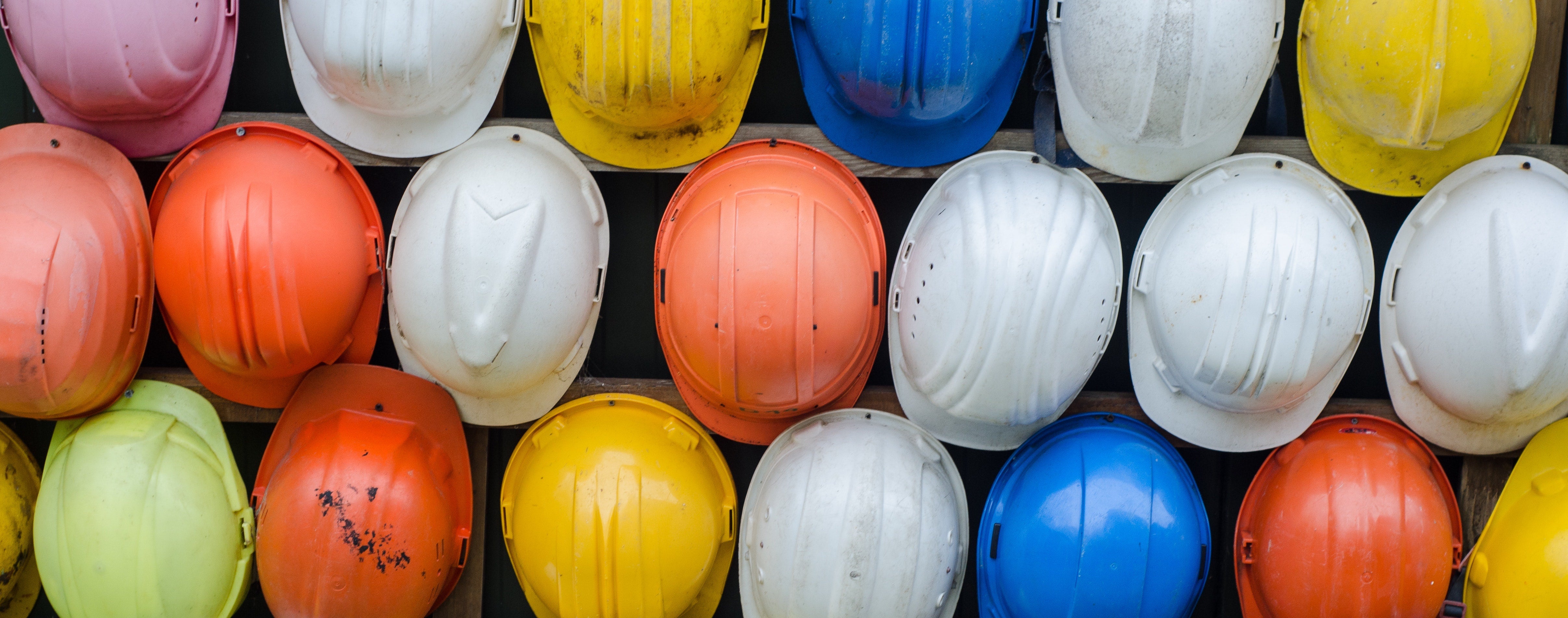Hard Hats
Hard hats are a safety equipment essential for job sites – you can’t step foot on many construction sites without one. But do you know when and why you need to wear one? Do you know what separates a Type 2 from a Type 1 hard hat? And how do you know when you need to replace your headgear? Read on for these and more guidelines for proper hard hat use.
When Should You Wear a Hard Hat?
Hard hats must be worn in a variety of circumstances. These include, but are not limited to:
- When there is work going on above you
- When you are in the vicinity of a hoist or crane
- When you are working around low-hanging structures like pipes or overhangs.
- When you are exposed to electrical conductors
It is always better to wear a hard hat if you are unsure – construction sites can be unpredictable and personal safety should always be your top priority.
Hard hats are crucial for job site safety, as they protect against two of the Fatal Four injuries on job sites.
- Falling objects accounted for 8.2% of worker fatalities (2017)
- Electrocutions accounted for 7.3% of worker fatalities (2017)
Hard Hat Styles, Types, and Class
There are several styles of hard hat, and most are sufficient for basic use. The traditional baseball cap style hard hat is common because it is lightweight, comfortable, and protects your face from falling objects. A full brim style is a great option for improved protection of the ears and neck. If you are a kettleman, you need a hardhat with a face shield. As a rule of thumb, if you are working with equipment that sparks or may create flying debris, a face shield is a good idea. It never hurts to be extra careful when protecting your eyesight and the sensitive skin on your face.
In addition to styles, hard hats are organized by type and class:
Type 1: Protect against impacts to the top of the head
Type 2: Protect against impacts to the top AND side of the head
Class E: Provide protection against high voltage up to 20,000 volts
Class G: Provide protections against voltage up to 2,000 volts
Class C: Offer no protection against electric currents/conductors
Be sure to speak to your employer and/or job site supervisor about which type and class of hard hat are required for your duties.
Care and Usage:
- All hard hats must have a suspension system to absorb the impact of a falling object.
- Make sure that the hat is neither too tight, nor too loose. The proper fit will not only be more comfortable but will provide better protection.
- Do not drill holes in your hard hat to increase ventilation. This weakens the shell, which can lead to shell failure and severe injury.
- On windy days, adjust your headband to keep your hardhat secure. Chin straps are also helpful for securing your hard hat in the wind.
- In winter months, snap-in hard hat liners are a great way to stay warm without compromising safety.
- Though it may seem counterintuitive, hard hats keep you cooler in the summer, while protecting your head from the sun, and shielding sensitive skin on the scalp from harmful UV rays.
When To Replace?
Like all personal protective equipment (PPE), you must inspect your hard hat and replace it with a new one regularly. As a rule of thumb, if there is anything wrong with the shell, the hard hat should be discarded and replaced. If there are problems with the suspension, they can usually be repaired or replaced without needing a new dome.
Replacement is absolutely necessary when:
- The hard hat has taken a severe impact and shows cracks or deep scratches
- It is best to replace the hat even when damage is NOT visible
- You have had the hard hat for 5 or more years (regardless of appearance)
- 2 years if the hat is regularly exposed to high temperatures, chemicals, or sustained sunlight
- The hard hat has been painted (as many paints contain chemicals that break down plastics)
- It is recommended that suspension systems be replaced every 12 months.
If the suspension system is damaged, inspect it thoroughly. If the system is simply not installed correctly, it may be possible to repair it. If there are any tears or broken parts, the suspension should be replaced. As long as the dome is not damaged, the suspension system can be fixed without replacing the entire hard hat.

